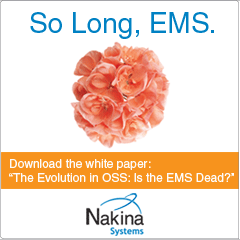By Costa Constantakis and Sergio Pellizzari
Service providers in the telecom and data networking industry spend three times more to operate and secure their networks than they do on capital investments to buy networking equipment. It’s little wonder that they are showing a keen interest in reducing operating expenditures (OPEX) through improved efficiencies and better use of available Network Management / OSS software tools.
When discussing such OSS tools, particularly in the real world of network resource management, most of us commonly refer to inventory management and related applications such as provisioning and service activation. But a strong case for network inventory management in particular has been made in service provider circles and is now widely accepted operational doctrine. Leading vendors like Telcordia, Cramer Systems, MetaSolv Software and NetCracker are filling the needs in this realm adeptly with feature-rich offerings in their respective inventory management applications.
Yet in spite of the strength of inventory management applications available on the market today, service providers are still consistently frustrated by inconsistencies in their databases of record that hamper their efforts to automate critical processes like service activation.
The question, then, remains: Why is that?
Garbage in, Garbage out
The inherent weakness in Inventory Management systems lies not in the applications themselves but in the way data is fed into them.
Service providers today largely use manual processes to populate and maintain database information that relates to the network itself. This data is intended to represent real-time information on the network infrastructure. In many cases, these databases exist as disparate “islands” of individually-owned data in spreadsheets or other rudimentary database formats. It is not unusual for a service provider’s inventory to be tracked using thousands of individual spreadsheets residing on the computer desktops of geographically dispersed individuals, with no particular central coordination to synchronize or update the data in a central location. These data stores are manual, inconsistent, and largely inaccessible by individuals or “northbound” software applications for which such data would be tremendously valuable, such as inventory management systems.




